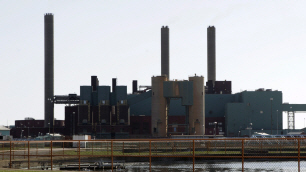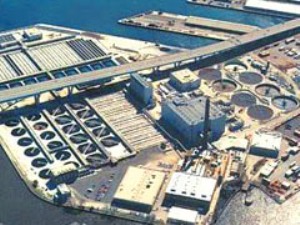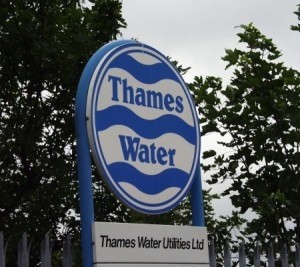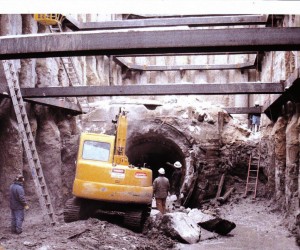Part two of a series by Diane Bukowski
 In 1977, under a consent decree, U.S. District Court Judge John Feikens appointed himself to oversee the Wastewater Treatment Plant (WWTP), DWSD’s sewage side, to enforce compliance with federal environmental requirements under the Clean Water Act. He insisted at the time that he was not trying to wrest control from the city of Detroit, and appointed Mayor Coleman A. Young as “special administrator.”
In 1977, under a consent decree, U.S. District Court Judge John Feikens appointed himself to oversee the Wastewater Treatment Plant (WWTP), DWSD’s sewage side, to enforce compliance with federal environmental requirements under the Clean Water Act. He insisted at the time that he was not trying to wrest control from the city of Detroit, and appointed Mayor Coleman A. Young as “special administrator.”
During the entire 24 years that tunnel inspector/whistleblower Jim Casha worked on DWSD projects, he said that graft and waste on water department contracts was rampant. Longtime DWSD chemist Saulus Simolaunus, at one time president of the chemists’ union local, has always warned that the department was racking up huge amounts of debt on unnecessary private contracts.
At a Michigan Welfare Rights Truth Commission forum on the human right to water, he noted that 53 cents of every dollar paid to DWSD goes to service its debt, stemming from unnecessary bond issues, and leading to continual water rate increases.
In 2000, Feikens ordered DWSD to hire Detroit Wastewater Partners as a consultant at a cost of $550 to $700 million over 5 to 11 years, allegedly to keep the department in compliance with federal standards.
The Business Wire reported, “Jacobs Engineering Group Inc. (NYSE: JEC) announced today that its subsidiary Sverdrup Civil, Inc. and their joint venture partner Wade-Trim signed a contract with the City of Detroit Water and Sewerage Department (DWSD).
“This joint venture, known as the Detroit Wastewater Partners (DWP), will perform program management/construction management for rehabilitation and upgrade of the Detroit Wastewater Treatment plant. The 5-year project is valued at $550 million; options could extend the contract to eleven years and $700 million.”
“DWP will prepare plant needs assessments and develop a program of improvement projects needed to meet DWSD goals. During the implementation of these projects, DWP is responsible for design, construction, and startup of assigned contracts. At DWSD’s option, DWP will provide extended maintenance on new and existing facilities for a period of 7 years.”
WWTP workers were supposed to be trained to take over DWP responsibilities, but that never happened.
Instead, WWTP worker William White, a grievance investigator for Local 207 of the American Federation of State, County and Municipal Employees (AFSCME), said in 2006, “The water department has already eliminated over 800 vacant city positions and they’re violating the city’s anti-privatization ordinance every day with new contracts.”
In 2001, Feikens on his own authority began assuming control of the entire department including the water side. He allowed newly-elected Mayor Kilpatrick to approve certain major “red-tag” contracts without the consent of the City Council, a process that greatly accelerated graft and privatization.
Under his direct orders, the Infrastructure Management Group (IMG), based in Washington, D.C., was hired in 2002 to oversee the process.

Reason Foundation published report by IMG heads Joyner and Steckler calling for privatization of all water systems
By 2004, according to court documents, IMG and its employees had been paid at least $3.3 million from DWSD funds, including large airfare and hotel bills. Despite the fact that City Council never approved the IMG contract, Feikens ordered extensions of their contract through 2009.
When Detroit’s City Council voted to revoke the IMG deal, Kilpatrick vetoed their action, claiming that his “hands were tied” because Feikens ordered the contract.
Feikens extolled Kilpatrick and DWSD director Victor Mercado, both now under federal indictment, and IMG. Feikens said DWSD was “well on its way to achieving compliance with the Clean Water Act,” as a result of the triumvirate’s work, and as a result a special administrator was no longer needed.
IMG previously arranged the privatization of the Milwaukee Wastewater System and the “outsourcing” of the Lee County, Fla., water and sewer system. Its three top officers, Steve Steckler, John Joyner and Brian Wolf, were authors of a 2003 Reason Foundation study, which pushed for the privatization of public resources like water, lighting, jails, airports, roads and bridges.
Mercado previously worked with Joyner at United Water Resources, a global water privatizer now owned by the German-based Suez Company. Mercado was also director of operations for the private Jamaica Water Supply Company from 1989 to 1996, vice president of Thames Water North America and general manager of Thames Water Puerto Rico from 1999-2002.
Thames Water, according to the Public Citizen, topped lists of the worst polluters in England and Wales for several years, with regulators finding that the company was fully aware of conditions that led to raw sewage discharges and could easily have prevented the pollution.
Joyner, Steckler and other IMG officials have contributed substantially to Kilpatrick’s campaign and those of other city officials.
Metro Times columnist Jack Lessenberry recently posted a column in favor of regionalization on his own blog. But Susan, a water department worker, opposed his stand in the comments section.
“Mercado and Kilpatrick claimed lots of capital expenditure was needed,” she said, “Money for pipes, CSO (Combined Sewer Overflow) basins, failure of mains, etc. They claimed increasing demand for water demanded more building and investment. This was a scam. Mercado and Kilpatrick wanted rate increases every year and increased the spending to private contracts.”
DWSD has always been a gold mine for private contractors, who perform all major new construction work. However, under Feikens’ oversight, the city greatly expanded their roles.
Where city engineers and analysts once designed projects and then bid them out for construction to private companies, under “Design/Bid/Build” schemes, private companies now get “Design/Build” and even “Design/Build/Maintain” contracts.
These have displaced thousands of resident city workers, doing particular damage to those in the skilled trades. Public jobs have frequently been the only avenue for women and workers of color in the trades to get employment.
Susan went on to say, “Private companies like to get work from the Water Department and sometimes that work is not needed. Proper emphasis on good maintenance and operations that support conservation and efficiency will benefit all ratepayers. Regionalization is more politicians that bring no value to the table, just more bid rigging.
“We should understand that Kilpatrick and Mercado got rid of folks like the camera crew that inspected mains for problems. They wanted catastrophic failure so they could bid the contracts. The federal oversight undermined our ability to scrutinize management of DWSD. Judge Feikens fought FOIA requests and relied too much on Mercado and IMG. More transparency and public oversight, less backroom deals and bid rigging is needed. Regionalization will undermine that process.”
The contracting out of city inspectors on the 21 mile Macomb County Interceptor likely resulted in such “catastrophic failure,” the infamous break of the water main on 15 Mile Road in Sterling Heights in Aug. 2004. The collapse created a 30-ft. deep, 60-ft. wide, and 160-ft. long sinkhole, and released millions of gallons of raw sewage into the upper middle-class community.

Kwame Kilpatrick (center) and Victor Mercado (r) with local officials at site of Macomb interceptor break
“Before 2004, DWSD workers were responsible for checking the Interceptor’s stability and maintenance, going into manholes and otherwise making sure it operated properly.” Said John Riehl, president of AFSCME Local 207. According to my members, our inspectors walked every mile of that main, but when the contractors took over they only inspected it piecemeal.”
One worker remembered that when the Macomb County Interceptor was first built in the late 1960’s, word was that construction companies maximized their profits by sometimes using only two inches of concrete in areas that required up to 20 inches. This was despite the fact that heavy sand and soil conditions in the area endangered the main if water pressure dropped, as it recently did in Highland Park when that city’s main water pump malfunctioned.
(See earlier VOD story “One man’s war against Detroit contractor corruption.” Tunnel inspector Jim Casha details how private contractors caused the collapse of the DSO-2 tunnel near the Wastewater Treatment Plant in 2003 by deliberately diluting the grout needed to fix in the rock walls around the tunnel.)
Whatever the cause of the Oakland-Macomb County main’s collapse, private contractors raked in millions on repairs, and water rates rose as a result.
According to a 2005 DWSD publication, “The Fix for That Sinking Feeling,” Inland Waters Pollution Control was the prime contractor on the repair job. Subcontractors were E.C. Korneffel, Ferguson Enterprise, Great Lakes Diving and Salvage, Hayward Baker, J. Mack Agency, Lakeshore Engineering Services, L. D’Agostini, Mersino Pump & Power, Northern Concrete, NTH Consultants, Ltd., O’Laughlin Construction, Rohrscheib Sons Caissons, Inc., Rotor Electric, Spalding DeDecker, Spartan Specialties, Ltd., Superior Engineering, and Thompson Pump Midwest.
Inland Waters, Ferguson Enterprise, and Lakeshore Engineering are all cited in the “Kilpatrick Enterprise” indictments as involved in various illegal activities aimed at soliciting contracts, but only Bobby Ferguson was indicted. Officials from the other two companies, which are white-owned, are expected to testify as witnesses.
Those three companies, and many of the remaining companies, in particular L. D’Agostini, Nth Consultants, and Rotor Electric, consistently appear in mayoral and council campaign finance reports as generous contributors.
The Macomb County Interceptor, and the lucrative contracts associated with it, is now in the hands of Macomb County. If the participants in the Feikens Enterprise, along with politicians like State Rep. Kurt Heise, get their way, the entire DWSD system will soon be prey to the “political vultures” who created and continue the “culture of corruption” that the daily media has blamed on the Kilpatrick administration alone.













Pingback: Behind the 2012 Macomb Interceptor Project « Red Run
i worked for BOBBY FERGUSON FOR 7 YEARS AND BETWEEN HIM HAVING NO IDEA HOW UNDERGROUND CONSTRURUCTION WORKS HE WAS BY FAR THE DUMBEST COON I HAVE EVER SEEN THE 1191 LABERORS UNION SHOULD ALSO BE INVESTAGATED AS WELL BEING AS THEY ARE AS CORRUPT AS KWAME AND BOBBY FERGUSON IAM A LABORER OF 15 YEARS AND THAT UNION HAS DONE ABSOLUTELY NOTHING FOR ME THAY SUPPORT MINORATIES BUT THE PEOPLE WHO KEEP THE UNION DOORS OPEN AND KEEP PAYING FOR ALL THE UNION BIG SHOTS IHOPE THIS UNION FALLS BECAUSE THEY ARE ALL CROOKED
(See earlier VOD story “One man’s war against Detroit contractor corruption.” Tunnel inspector Jim Casha details how private contractors caused the collapse of the DSO-2 tunnel near the Wastewater Treatment Plant in 2003 by deliberately diluting the grout needed to fix in the rock walls around the tunnel.)
This statement is totally False!
First the tunnel Did Not Collapse,it Flooded.
Apparently Jim Casha has told you only an upset inspectors view point.
The grout used to backfill behind the concrete segments & rock walls was fine.
The grout he has stated that was diluted was made that way to reach out through 50′ to 100′ probe holes.This was to try & help seal small cracks & fissures in the limestone to try & prevent water seepage so tunneling could continue to move forward.The biggest problem was the City of Detroit’s bad mapping of underground salt brines & conditions of artisan water pressure (look up “Salt Brines”).Nobody really knows what was hit down there, just that it was under a lot of pressure & made a lot of water!
Any one that has been by the 12′ high structure at the area today should under
stand that the water coming out over the top is under pressure & not just simple ground water.The top of that structure is way higher than the river water level & it would need to be under some kind of pressure to spill over the top.
Once again it shows bad city management not the contractors!
The contractors were contacted for their comments regarding Mr. Casha’s statements, but none responded. If you are a contractor or contractor employee, please identify yourself at voiceofdetroit@hotmail.com so your remarks can be taken into account. Otherwise, it is difficult to assess the validity of your statements. — Diane Bukowski, publisher VOD